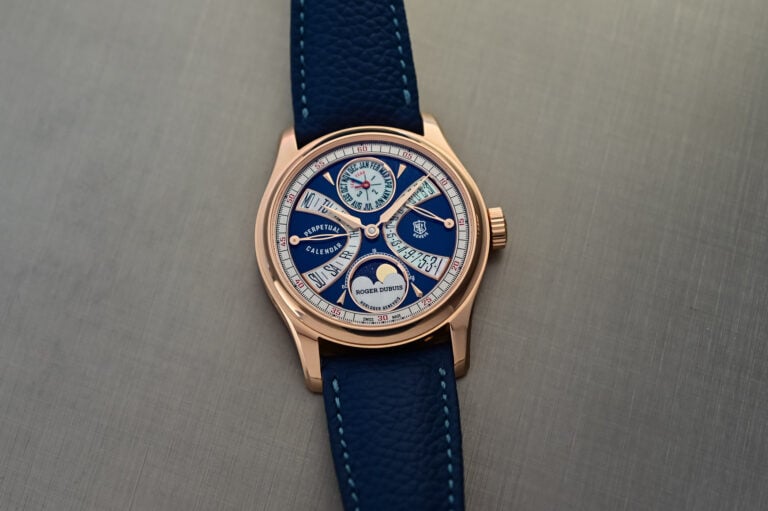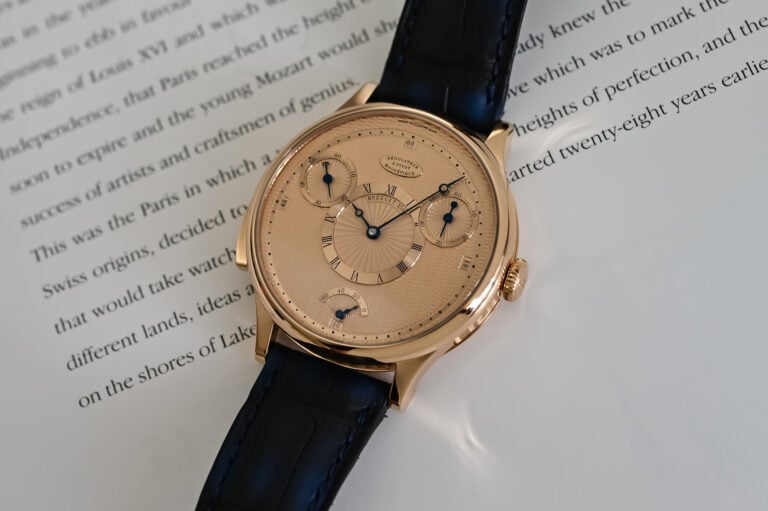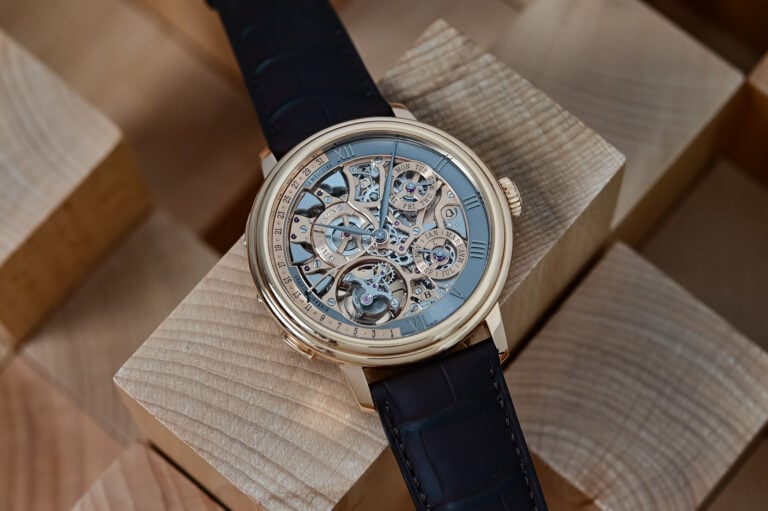A shellac liquid or resin painted on watch dials and polished when hardened, providing very uniform surfaces that can rival enamel in depth, gloss and overall aesthetic.
An oversized date aperture on the dial, often requiring two separate date discs (one for the tens, the other for single units) or two superimposed discs (one with 15 numerals and the other with 16) to fit. This is a more difficult and complex date complication, and consequently more expensive.
A date anomaly occurring once every four years when an extra day is added to February (29th). It ensures that the Gregorian calendar is in synch with Earth’s revolutions around the sun, which is almost 6 hours longer than 365 days.
Part of the escapement that engages the escape wheel (locking and unlocking) with forks to translate the rotational energy of the balance wheel.
The most common escapement in mechanical timepieces, it uses an anchor-shaped lever with two (usually) jeweled pallet forks to control the escape wheel. It translates the rotational energy of the balance wheel to impulses via the pallet forks locking and unlocking with the escape wheel.
An old measuring unit of length predating the metric system, predominantly used in France and sometimes referred to a Ligne Parisienne (Paris line). It’s still used in some scientific and related applications. One ligne equates to 2,256mm, indicated by a triple apostrophe. In watchmaking it was primarily used to denote a movement’s diameter.
This indicates a watch that is limited in production, often featuring a stand-out element. A Limited Edition watch can be dedicated to anything and is primarily used as a strategy by watch manufacturers. It can also be the result of a limited production capacity, for instance by an independent watchmaker.
The four extensions of a wristwatch case (two on each side) used to attach a strap or bracelet. Also known as horns.
The glow in the dark effect of watch hands, indices, etc. that are coated with a photoluminescent material. Early lume was radioactive (radium), but watches today use a safe, non-radioactive equivalent.



